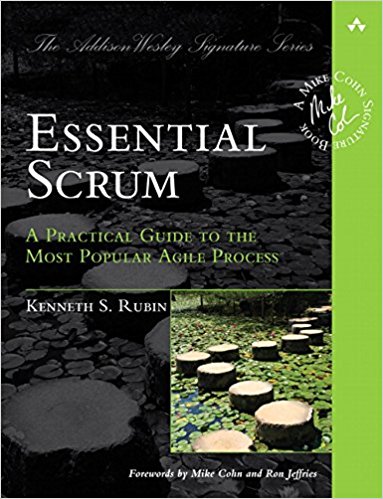The book is a comprehensive overview of Scrum. It goes from the principles of agile through the mechanics of sprints to the roles on a Scrum team and all the way up to topics like technical debt and portfolio management with Scrum. A very helpful aspect of the book is the detailed "visual language," Kenny created while writing the book. He created icons for every possible aspect of Scrum and these are used to make up dozens and dozens of figures to illustrate all the work and knowledge flows of a Scrum project. His diagrams definitely go well beyond the typical double-loop depiction of Scrum.
The book is well-written and draws on Kenny's experience introducing Scrum to over 200 organizations. I've worked with Kenny in various capacities over the past twelve years and I can highly recommend his book. In fact, I'd considered writing a book just like this until he'd told me he was already writing it. So I did the next best thing and asked him to include the book in the series I edit for Addison-Wesley. Because it's in that series I wrote a foreword to the book, which I'll reproduce here to give you a bit more insight into what I like about this book:
From the Foreword
I had lunch today at a Burger King. A sign on the wall proclaimed the restaurant the “Home of the Whopper” and then proceeded to tell me there were over a million different ways to order a Whopper. If various combinations of extra or no pickles, tomatoes, lettuce, cheese, and so on can lead to over a million ways to make a hamburger, there must be billions of possible ways to implement Scrum. And while there is no single right way, there are better and worse ways to implement Scrum.
In Essential Scrum, Kenny Rubin helps readers find the better ways. His isn’t a prescriptive book—he doesn’t say, “You must do this.” Instead, he teaches the essential principles underlying success with Scrum and then gives us choices in how we live up to those principles. For example, there is no one right way for all teams to plan a sprint. What works in one company or project will fail in another. And so Kenny gives us choices. He describes an overall structure for why Scrum teams plan sprints and what must result from sprint planning, and he gives us a couple of alternative approaches that will work. But ultimately the decision belongs to each team. Fortunately for those teams, they now have this book to help them.
An unexpected benefit of Essential Scrum is the visual language Kenny introduces for communicating about Scrum. I found these images very helpful in following along with the text, and I suspect they will become commonplace in future discussions of Scrum.
The world has needed this book for a long time. Scrum started as a small concept. The first book to talk about it—Wicked Problems, Righteous Solutions in 1990 by DeGrace and Stahl—did so in six pages. But in the more than 20 years since that book appeared, Scrum has expanded. New roles, meetings, and artifacts have been introduced and refined. With each new piece that was added, we were at risk of losing the heart of Scrum, thw part of it that is about a team planning how to do something, doing some small part of it, and then reflecting on what the team members did and how well they did it together.
With Essential Scrum, Kenny brings us back to the heart of Scrum. And from there teams can begin to make the decisions necessary to implement Scrum, making it their own. This book serves as an indispensable guide, helping teams choose among the billions of possible ways of implementing Scrum and finding one that leads to success.







